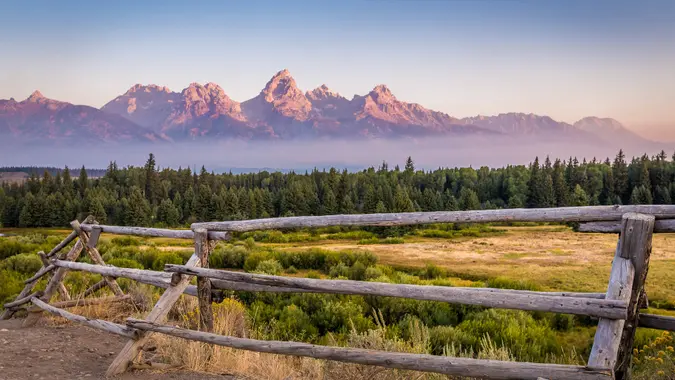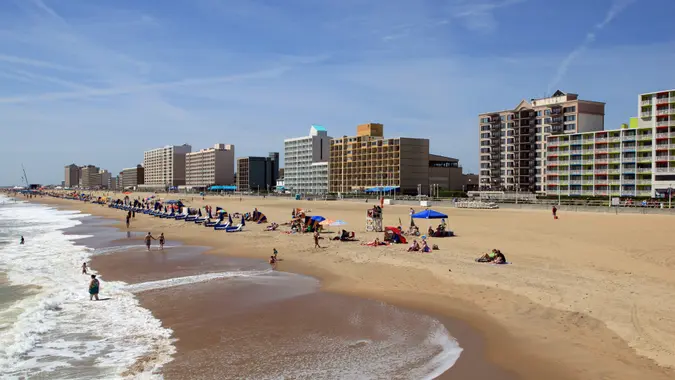5 Financial Reasons Baby Boomers Are Fleeing 55+ Communities

Commitment to Our Readers
GOBankingRates' editorial team is committed to bringing you unbiased reviews and information. We use data-driven methodologies to evaluate financial products and services - our reviews and ratings are not influenced by advertisers. You can read more about our editorial guidelines and our products and services review methodology.

20 Years
Helping You Live Richer

Reviewed
by Experts

Trusted by
Millions of Readers
As baby boomers (born 1946-1964) entered their empty-nest years, developers spotted an opportunity. They began building 55+ communities — neighborhoods designed for active older adults, typically with golf courses, fitness centers and a no-kids policy. For decades, these developments offered the promise of carefree retirement living.
But the tide is turning. Once seen as the ultimate retirement destination, 55+ communities are losing their appeal, and the main culprit is money concerns. Here are five financial reasons boomers are rethinking life in age-restricted neighborhoods.
1. Rising Community Costs
Real estate prices are up everywhere, but 55+ communities have been hit especially hard. Homeowners association (HOA) fees — often covering amenities like pools, clubhouses and landscaping — have skyrocketed. Add in rising property taxes and maintenance fees, and the monthly costs can overwhelm retirees living on fixed incomes.
Many of these communities were originally marketed as affordable alternatives to assisted living, allowing residents to “age in place.” But with today’s costs, that financial advantage is shrinking fast.
2. Residents Are Aging — And So Are Their Needs
The first wave of boomers who moved into 55+ neighborhoods decades ago are now entering their 70s and 80s. As they age, medical needs increase, and proximity to a clinic or urgent care center isn’t enough. Many find themselves needing assisted living, home health aides, or skilled nursing — services that can be both hard to find and financially draining.
People are also living longer, which compounds healthcare expenses. Even those who once expected to “retire in place” are realizing their community can’t meet their long-term care needs without eroding their savings.
3. Distance From Family
When these communities first opened, many boomers were eager to enjoy their independence. They often relocated to warm-weather states like Florida or Arizona. Priorities shift with age, though, and many now want to live closer to children and grandchildren — not a plane ride away.
Travel has become more expensive and physically taxing, and adult children often play a crucial caregiving role as parents age. Living near (or even with) family can reduce the need for paid caregivers and make emotional and financial sense.
4. Home Repairs and Maintenance Add Up
Homeownership doesn’t get easier with age. Tasks like cleaning gutters, fixing leaky faucets or maintaining landscaping can quickly become unmanageable. In 55+ communities, strict HOA rules often require pristine lawns and well-kept exteriors, meaning residents must hire landscapers or repair professionals or risk fines.
For retirees on a fixed income, these unplanned expenses can quickly chip away at savings. The dream of carefree homeownership can turn into a financial burden when you can no longer handle maintenance yourself.
5. Slowing Resale Demand
As more 55+ communities have been built over the decades, the market has become saturated. Selling a home in these neighborhoods can take longer and may require lowering the price, especially if there aren’t enough younger buyers entering the 55+ demographic.
Inflation and rising interest rates further complicate things, eating into both home values and retirement savings. Many boomers are choosing to sell now, while they can still fetch a reasonable price, rather than wait until they’re forced to move under financial pressure.
The Future of Retirement Living
The 55+ community model isn’t going away, as there will always be demand for independent, age-friendly housing. But the next generation of retirees may seek something different: more flexibility, less exclusivity and lower costs.
Hybrid housing options — like multigenerational neighborhoods, co-housing or smaller, mixed-age developments — could offer the social connection and convenience retirees want without the financial strain.
For many boomers, the dream of the perfect retirement community hasn’t vanished — it’s simply evolving.
Caitlyn Moorhead contributed to the reporting for this article.
 Written by
Written by  Edited by
Edited by 

























